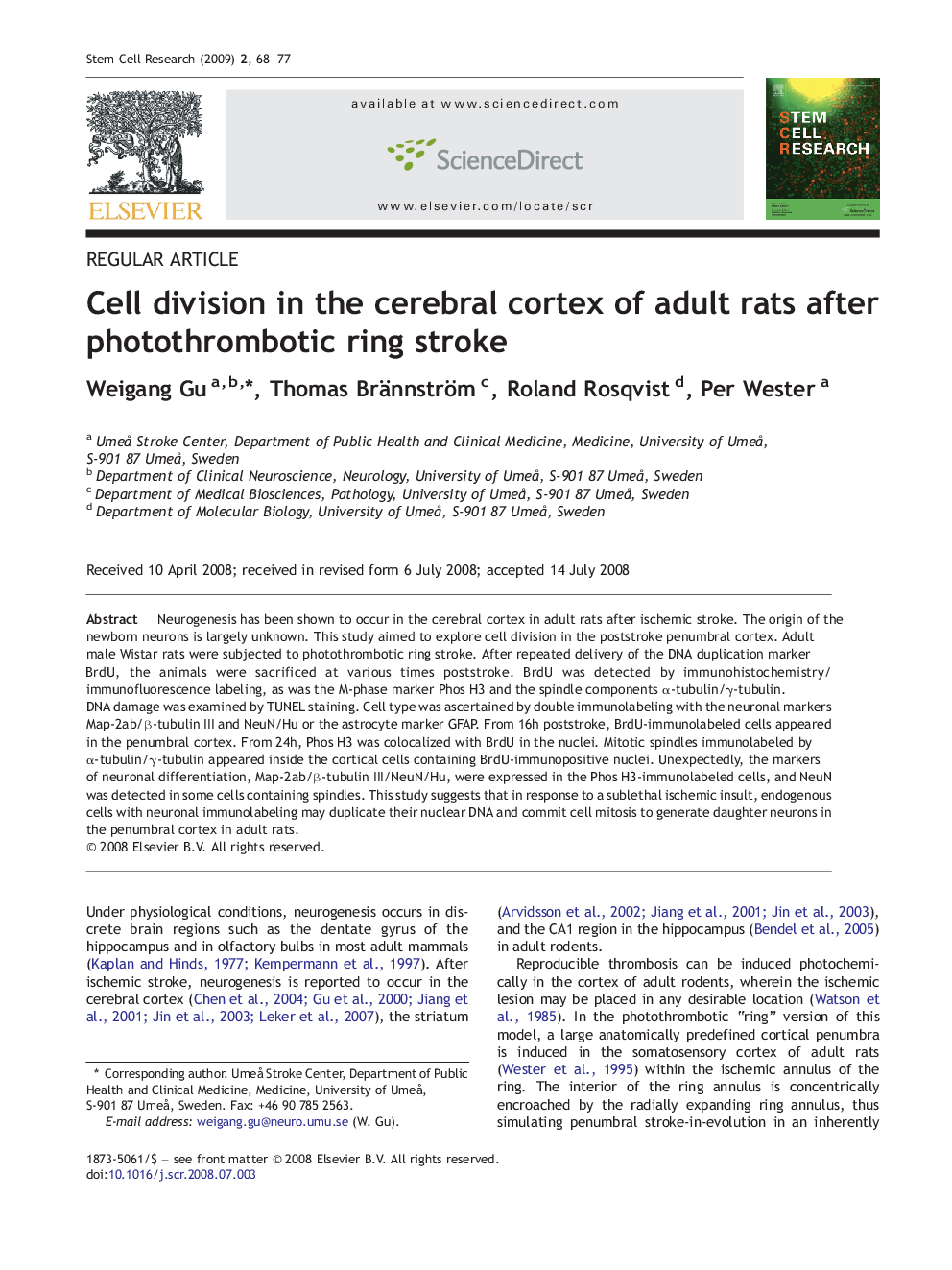| Article ID | Journal | Published Year | Pages | File Type |
|---|---|---|---|---|
| 2094385 | Stem Cell Research | 2009 | 10 Pages |
Neurogenesis has been shown to occur in the cerebral cortex in adult rats after ischemic stroke. The origin of the newborn neurons is largely unknown. This study aimed to explore cell division in the poststroke penumbral cortex. Adult male Wistar rats were subjected to photothrombotic ring stroke. After repeated delivery of the DNA duplication marker BrdU, the animals were sacrificed at various times poststroke. BrdU was detected by immunohistochemistry/immunofluorescence labeling, as was the M-phase marker Phos H3 and the spindle components α-tubulin/γ-tubulin. DNA damage was examined by TUNEL staining. Cell type was ascertained by double immunolabeling with the neuronal markers Map-2ab/β-tubulin III and NeuN/Hu or the astrocyte marker GFAP. From 16h poststroke, BrdU-immunolabeled cells appeared in the penumbral cortex. From 24h, Phos H3 was colocalized with BrdU in the nuclei. Mitotic spindles immunolabeled by α-tubulin/γ-tubulin appeared inside the cortical cells containing BrdU-immunopositive nuclei. Unexpectedly, the markers of neuronal differentiation, Map-2ab/β-tubulin III/NeuN/Hu, were expressed in the Phos H3-immunolabeled cells, and NeuN was detected in some cells containing spindles. This study suggests that in response to a sublethal ischemic insult, endogenous cells with neuronal immunolabeling may duplicate their nuclear DNA and commit cell mitosis to generate daughter neurons in the penumbral cortex in adult rats.
